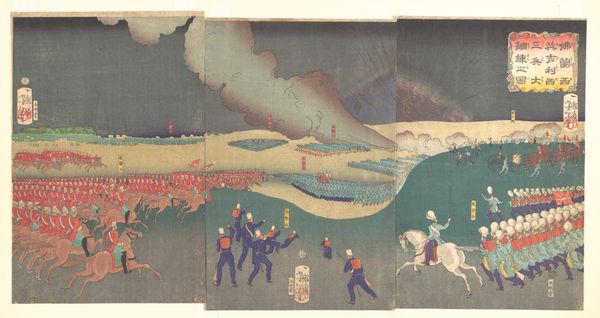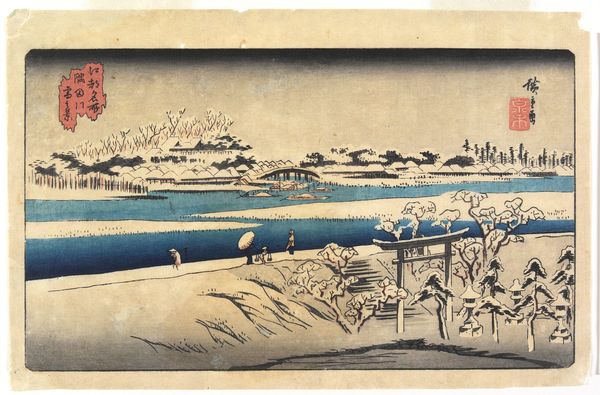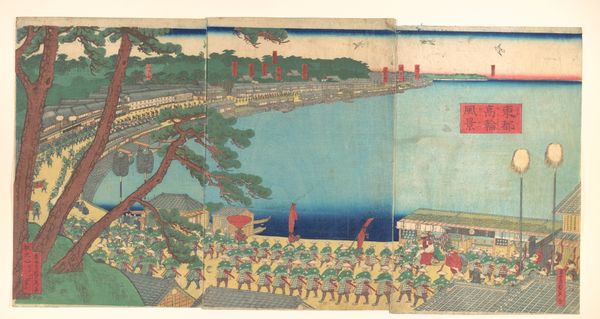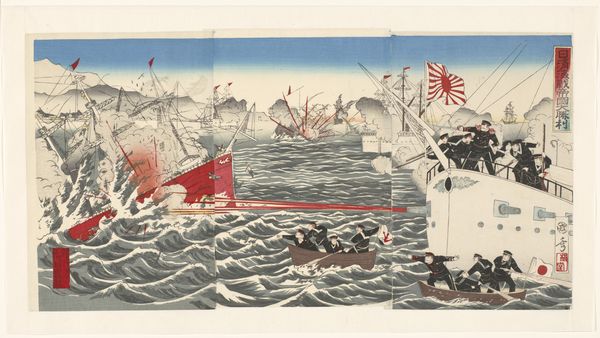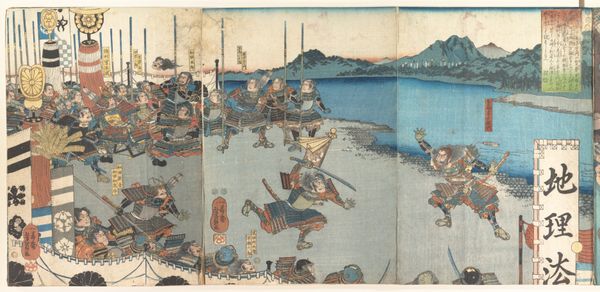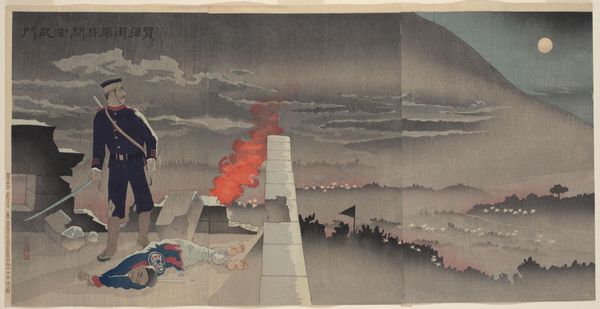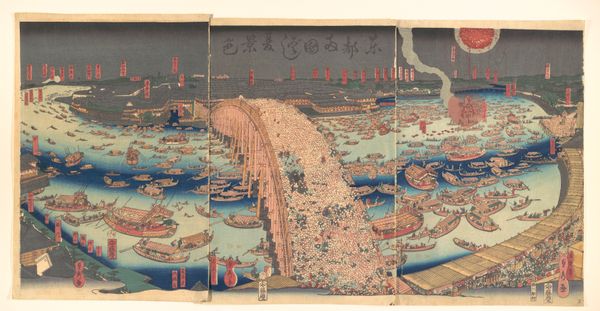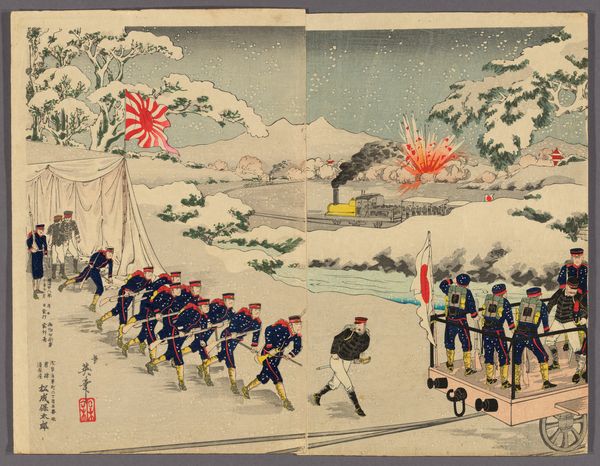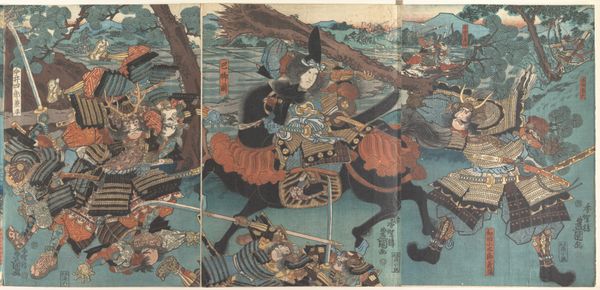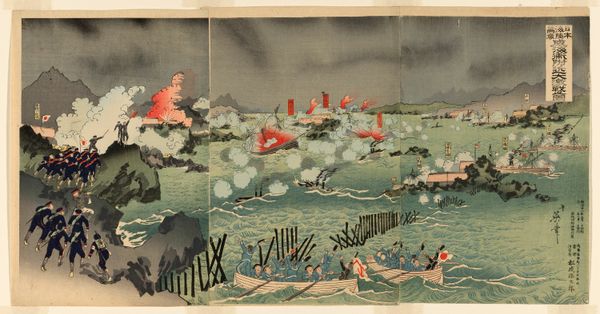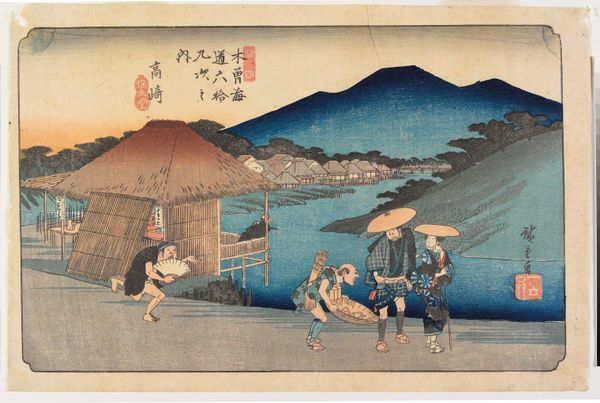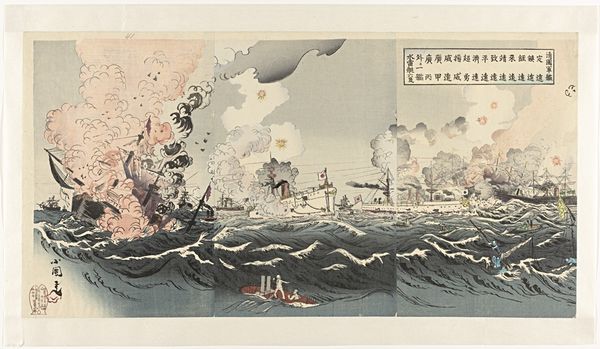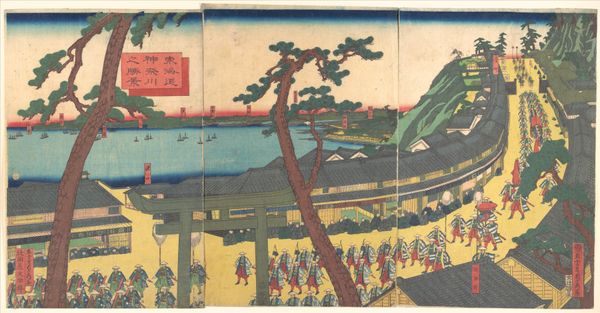
Maneuvers by Three Categories of French and English Soldiers (Furansu Igirisu sanhei ōchōren no zu) 1867
0:00
0:00
print, woodblock-print
#
narrative-art
# print
#
asian-art
#
landscape
#
ukiyo-e
#
figuration
#
woodblock-print
#
soldier
#
orientalism
#
history-painting
#
mixed media
#
watercolor
Dimensions: Image (a): 14 1/2 x 9 1/4 in. (36.8 x 23.5 cm) Image (b): 14 3/8 x 9 1/4 in. (36.5 x 23.5 cm) Image (c): 14 3/8 x 9 1/2 in. (36.5 x 24.1 cm)
Copyright: Public Domain
Tsukioka Yoshitoshi created this woodblock print titled 'Maneuvers by Three Categories of French and English Soldiers' in Japan. It presents a bird's-eye view of uniformed troops drilled in the Western style. The work testifies to the institutional reforms carried out during the Meiji Restoration, when Japan adopted Western military strategies. Yoshitoshi offers here a colourful and dynamic scene celebrating progress and modernization. But how does the image create meaning? Note the emphasis on order, uniformity, and discipline in the ranks of soldiers. This reflects the values promoted by the Meiji government. The depiction of Western military might suggests Japan's aspirations to become a major player on the world stage. However, you might want to consider whether the idealization of military strength conceals a more complex reality. What were the social costs of rapid modernization in Japan at this time? To understand Yoshitoshi's work, we can turn to historical sources, such as government documents, military manuals, and popular literature. This gives us insight into the complex relationship between art, society, and power.
Comments
No comments
Be the first to comment and join the conversation on the ultimate creative platform.
